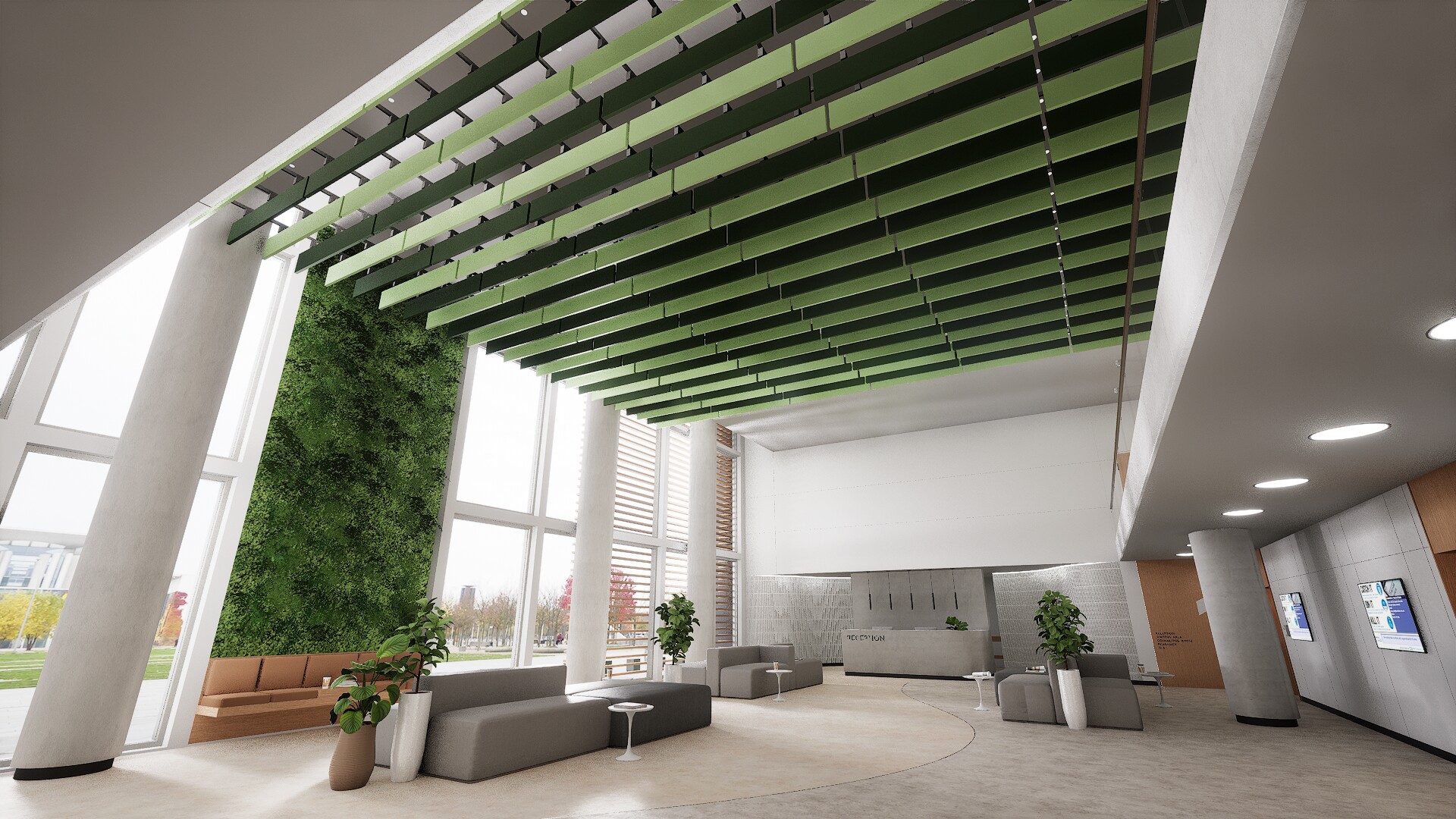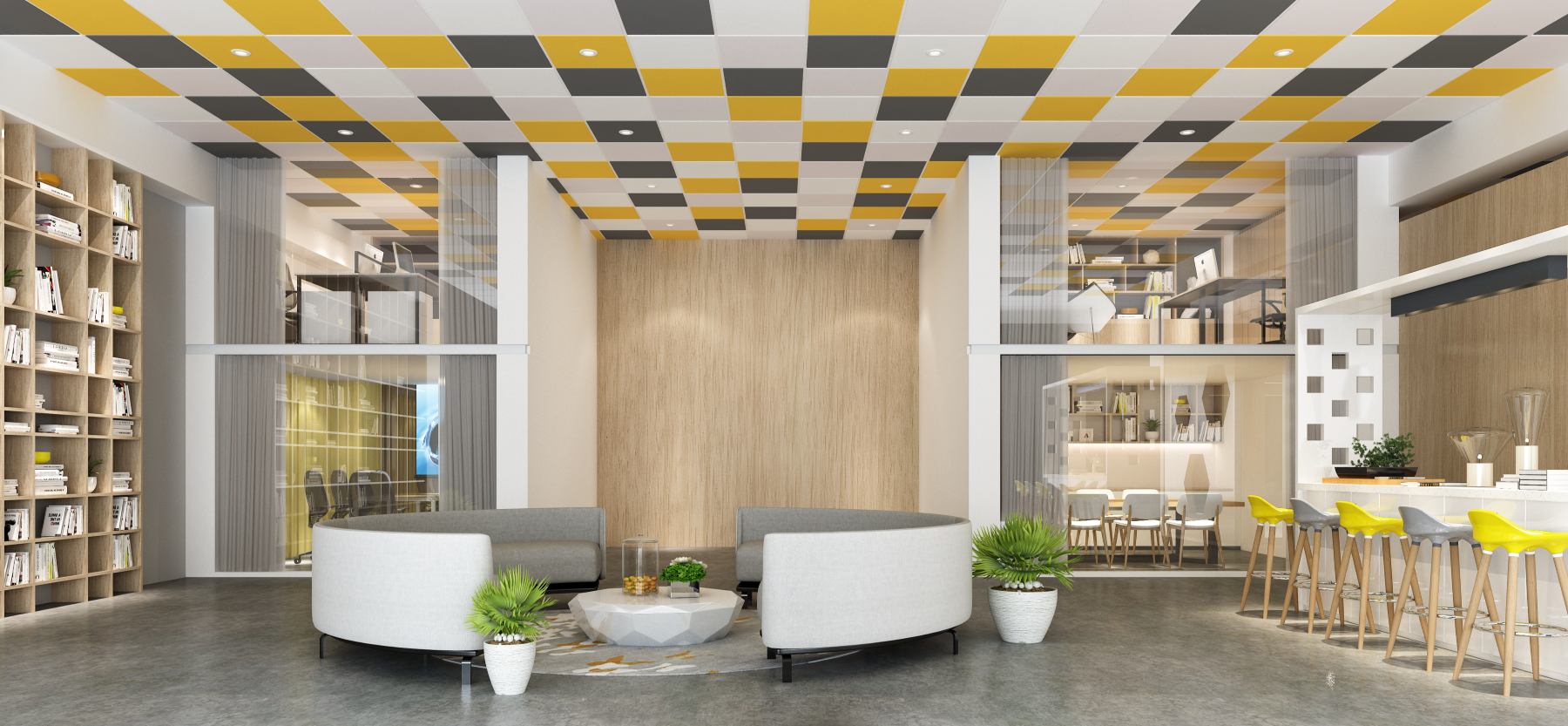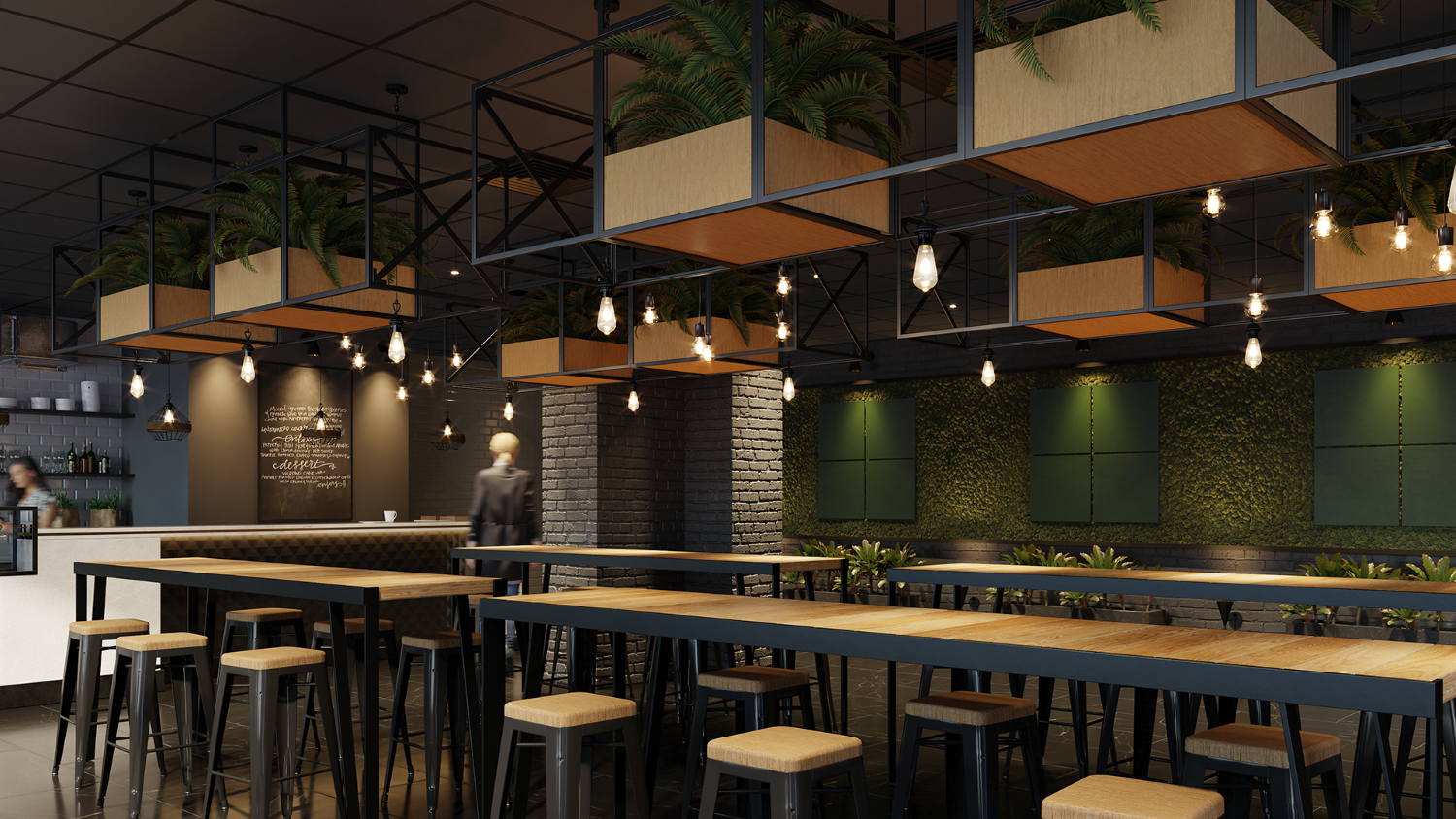Colour Can: Using Colour in Interior Design
Interior designers use colour in many ways to achieve different effects in different spaces. Colour can set the mood of a hotel lounge or you can use it to communicate brand values in commercial spaces. You can also use it for practical applications to enhance the use of a space, like wayfinding.
Colour is no longer the reserve of a feature wall and soft furnishings. More and more designers are using colour ceiling tiles, floating ceiling designs, and acoustic canopies and baffles. The modern ceiling is truly becoming the fifth wall.

Colour psychology in interior design
Colour is a powerful tool that can shape the mood and ambiance of a room. By understanding colour psychology in interior design and trying out different hues, you can create a pleasing environment.
But creating a colour ceiling design can feel tricky, especially if you’re used to standard white ceilings. When deciding to use colour on the ceiling, think about how colour, shape and texture can complement the room’s purpose and your design theme.
For instance, you might be designing a school interior. In this case, you might want to incorporate some bright and stimulating colours into corridors and classrooms. You could use darker colours in libraries and study spaces.
Or you may be designing a corporate office interior with a colour scheme that promotes productivity in the workplace. Colour acoustic ceiling tiles can communicate brand values, highlight breakout areas, or support health and wellbeing. In fact, in a 2014 survey by the British Council of Offices, 80% of people complained about a lack of colour in the workplace – one of many design gripes that impact wellbeing at work.
Aligning ceiling colour with design trends
You can use acoustic colour ceilings in a number of design trends. We look at a few of them here.
1. Biophilic design

You can use earthy colours inspired by nature to enhance biophilic designs. This can help boost wellbeing at work by connecting people with the environment. Biophilic design can also reduce fatigue and boost productivity. It enhances mood and provides employees with mentally restorative spaces where they can rest and recharge.
Biophilic design is a great way to lower stress levels naturally. Connecting with nature helps immensely, and it has the potential to bring great benefits in the long term. Adding colour to the ceiling and incorporating plants at height can bring biophilic design into a room without disrupting workspaces.
2. Maximalism

After years of minimalist interior design, maximalist design is on the rise. This design trend focuses on bold colours, patterns, textures and accents. It is the complete opposite of minimalism, with little place for whites, greys, and smooth, clear surfaces.
Maximalism is all about using colour to make design statements. One way to do this across the ‘fifth wall’ is to combine colour with shape. This creates a feature ceiling that maximises a design theme while also providing enhanced acoustics in a space.
Vibrant and contrasting colours draw attention to key areas within a room. For example, you could use Sonify Canopies to create a striking ceiling installation in a specific area. You can pair this with complementary wall absorbers for maximum design effect.
3. Colour drenching

Colour drenching is the interior trend of taking one colour and applying it to everything from your walls to your ceilings.
Unlike the traditional white woodwork and ceilings, this style focuses on using one colour to fill your space. The return of colour drenching shows a shift toward a more modern use of colour. It boldly embraces colour and does not hold back.
You can create smaller, more intimate spaces by using darker colours. A black ceiling and grid, along with a dark green living wall and matching wall absorbers, create a cohesive look. This combination is an effective way to use colour drenching.
Other ways to use colour
Beyond these three core colour trends, you can use other design touches with colour to enhance your interior design.
- Introduce curves: Move beyond squares and rectangles to softer lines and natural curves. This imitates nature, especially when combined with neutral colours. This adds flow to interiors, creating a welcoming and dynamic environment. By breaking up straight lines, you add depth and beauty through artful shadows and silhouettes.
- Layering and texture: Use colour to create layers and texture across a blank wall or ceiling. This can help to create focal points and make a space feel more inviting. The beauty of layering lies in its versatility. Cosy bohemian retreats, elegant contemporary settings and more can all benefit.
Some practical reasons to incorporate colour ceilings
There are other highly practical reasons to add colour to your ceiling designs:
- Branding: Colour and brand go hand in hand, with colour being an essential part of any brand’s visual identity. Add colour to a suspended ceiling and wall designs to enhance brand identity and create a sense of belonging. This technique isn’t just for businesses. Incorporating school colours into classrooms can foster a sense of solidarity among students.
- Hiding unsightly services: You can hide services with colour while maintaining an element of design and acoustic management in a space. Neutral tones can add a natural feel to the ceiling installation. This helps integrate acoustic ceilings into existing design themes such as biophilia.
- Zoning: Use colour to create zones in an open space. This helps occupants identify different areas, such as breakout and relaxation spaces. Colour zoning in offices can also delineate workspaces and meeting areas without the need for physical barriers. Or use it in a hospital, where a large open areas may serve several departments for waiting patients.
- Wayfinding: Add colour to corridors and large spaces to help people navigate unfamiliar environments like hospitals and schools. This is one of the easiest and most cost-effective ways to simplify and improve a wayfinding system. By using simple colour differentiation as a universal language, it immediately makes it much easier to follow a specific colour throughout the navigational experience.
Using Zentia ceiling and wall solutions to achieve your colour design goals
Zentia offers a range of colour products that can complement your interior designs.
Sonify Canopies and Baffles can create unique design features. They also conceal services while still allowing easy access, improving both looks and function. Choose between curved shapes or more angular panels to best fit your desired aesthetic. Sonify Wall Absorbers add texture to large wall surfaces while also helping to manage the acoustics of the space.
Coloured ceiling tiles like Prestige Colour and Aruba Colour can be used in wall to wall ceiling designs. They are a great way to add colour while managing the acoustics of a space. Or, add different shapes with Aruba Triangle for visual interest.
Combine coloured ceiling tiles with Sonify products to add layers of colour to interiors, or use DecoMesh with DecoFrame Kit Canopies to add different materials and texture.
Need a colour consultation? Get in touch
Contact Zentia’s team of architectural and design consultants for more help and assistance with your colour ceiling designs. Contact info@zentia.com and we’ll be in touch as soon as possible.